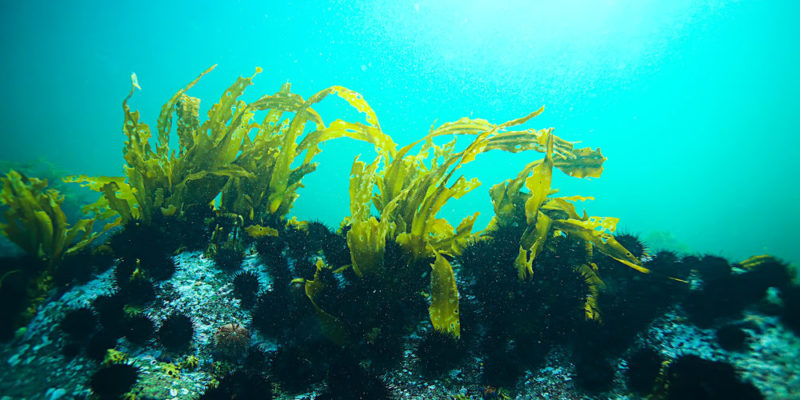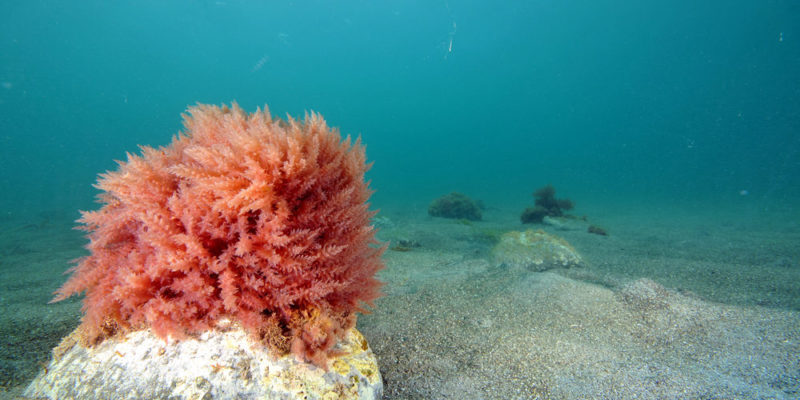We explain what algae are and how these organisms are classified. Also, what are its main characteristics and nutritional value.
What are Algae?
Algae are very important and varied eukaryotic living organisms . They are found in various environments and are characterized by being able to carry out photosynthesis, which makes them similar in this sense to higher plants .
Algae, taxonomically, are located in the kingdom Protista (Domain Eucarya) . Although “blue-green algae” is often spoken of in reference to cyanobacteria (a particular group of bacteria ), it should be noted that these are not true algae, as they are prokaryotic organisms.
Below, and as a summary, the main characteristics of algae.
Characteristics of algae :
unicellular or multicellular
Unicellular algae usually predominate in the seas , multicellular ones are found in all types of habitat ( soil , rivers, lakes ).
-
macroscopic or microscopic
 There are algae that can only be seen using microscopes (microscopic algae); others are large enough to be seen with the naked eye (macroscopic).
There are algae that can only be seen using microscopes (microscopic algae); others are large enough to be seen with the naked eye (macroscopic).
Main responsible for photosynthesis in the sea
The phytoplankton of the sea includes a high number of species of algae , so that this represents a very important way of capturing solar energy.
-
various morphologies
non-embryophytes

Unlike higher plants, algae do not form from an embryo, but by fragmentation of a colony or filament or by spore formation; both mechanisms involve asexual reproduction .
However, some algae have sexual reproduction, with the formation of a sexual spore, which will germinate when the conditions are appropriate. There is talk of alternation of generations, since there are algae that exist in a haploid or diploid state.
-
They have a cell wall
Some algae are heterotrophic
Due to the loss of photosynthetic pigments, some algae have come to live dependently on other living beings , for example as saprophytes, as epiphytic parasites or as symbiotics.
-
food value
 Algae have been used since ancient times as food in the Far East ( China , Japan ), as they have a high nutritional value. Remember that sushi is prepared using a seaweed called Nori.
Algae have been used since ancient times as food in the Far East ( China , Japan ), as they have a high nutritional value. Remember that sushi is prepared using a seaweed called Nori.
Source of substances of industrial interest
Alginate, carrageenan, spirulina, agar agar , for example, are obtained from algae , which supply the cosmetic, food and other industries; these substances can serve as emollients, antioxidants, etc.
-
Main types of algae (Classification)
 unicellular algae
unicellular algae
- Chrysophyta. Includes yellow green algae and diatoms. Most of these algae are flagellated, with an outer shell of silica. Reproduction is typically asexual, by means of zoospores.
- Euglenophyta. It includes flagellates known as euglenoids. Euglena is the most widespread genus.
- Dinoflagellates. Mostly marine. Some species are bioluminescent, others have been linked to red tides.
multicellular algae
- Rhodophyta. Also known as red algae, they have phycobiliproteins in the phycobilisomes. With these pigments they can capture light energy even at great depths. They constitute a morphologically diverse group, with about 10 unicellular genera and the rest multicellular. They are not flagellated.
- Phaeophytes. Also known as brown algae, they contain several types of chlorophyll (such as a and c). It includes unicellular, colonial, and filamentous forms. The most evolved brown algae have a carbohydrate transport system similar to that of vascular plants
- Chlorophytes. Also known as green algae, they have chlorophyll a and b, but some chlorophytes have lost their photosynthetic pigments and have started to function as endosymbionts for other organisms. Many of these algae are used for the production of biodiesel, since they accumulate fatty acids.
Veronica is a culture reporter at Collaborative Research Group, where she writes about food, fitness, weird stuff on the internet, and, well, just about anything else. She has also covered technology news and has a penchant for smartphone stories. .
Leave a reply
Your email address will not be published. Required fields are marked *Recent post

Sport: What Is It, Types, Risks, Features, Characteristics and Examples

Dogs: Emergence, Features, Characteristics, Feeding and Breeds

Story: Definition, Elements, Structure, Features and Characteristics

